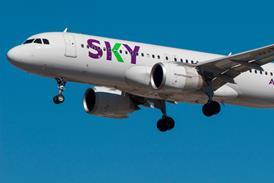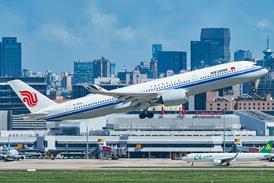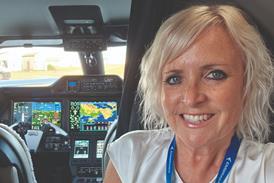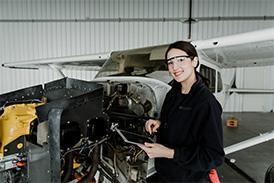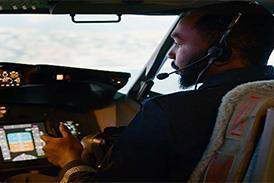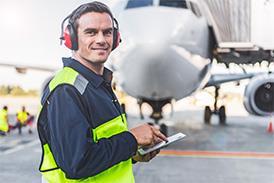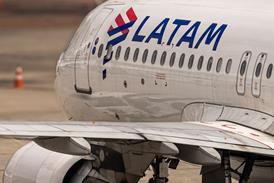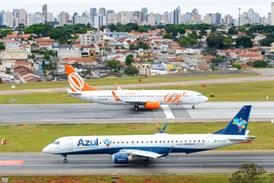The US Air Force (USAF) has successfully paired one its Lockheed Martin F-22 Raptor stealth fighters with an uncrewed jet in a demonstration flight.
The unmanned platform was a General Atomics Aeronautical Systems (GA-ASI) MQ-20 Avenger, which has frequently been used as a surrogate platform for the advanced tactical aircraft currently being developed for the USAF.
GA-ASI collaborated with F-22 manufacturer Lockheed and military systems integrator L3Harris on the manned-unmanned teaming demonstration, which took place in October at the Nevada Test and Training Range.
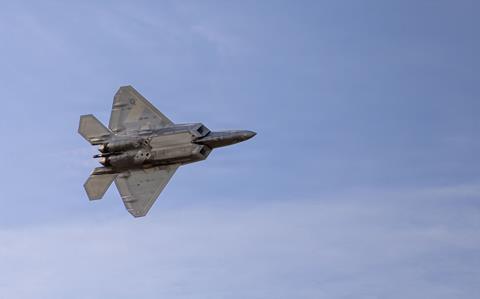
L3Harris installed Banshee software‑defined radio datalinks into each of the demonstration aircraft, enabling the pilot of the stealth fighter to control and manage the MQ-20 while in flight.
That feat was accomplished using the F-22’s onboard Government Reference Architecture Compute Environment (GRACE) system – an open architecture module that allows for new, third-party software to be integrated into the jet’s existing onboard systems.
The pilot then used a tablet referred to as the “pilot-vehicle interface” to oversee and direct the MQ-20 during the test flight.
Lockheed’s Skunk Works advanced projects unit led the F-22 integration project, which is one of a number of initiatives at Lockheed to modernise the iconic air superiority fighter.
“This effort represents Skunk Works bringing its diverse and unique expertise to the table to lead the way demonstrating the future of air combat, where single-seat aircraft command and control drones with simple and intuitive interfaces in the cockpit,” says Skunk Works general manager OJ Sanchez.
The successful integration of an uncrewed jet with an F-22 is significant, as the USAF has specified that it intends to have its premier air superiority fighter be the first platform to integrate with the new generation of semi-autonomous Collaborative Combat Aircraft (CCA) currently being developed.
“F-22 remains the threshold platform for CCA,” the service said in a fighter fleet modernisation assessment released in October. “Integration with [the Lockheed] F-16, F-35A, [and Boeing] F-15E and F-15EX is an emerging consideration.”
The report goes on to specify that the autonomous tactical jets will be paired with Lockheed’s newer F-35 strike fighter “in the future”.
The USAF also notes that newer Block 30/35 F-22s are undergoing “extensive modernisation”.
Prioritisation of the F-22 for CCA integration makes sense, as the air force has repeatedly stated that the first generation of uncrewed fighters will be tailored for air-to-air weapons delivery in support of air superiority and counter-air missions – the F-22’s primary duty.
However, the F-35 is in some ways better suited for CCA pairing and is farther along in the technical integration process.
The US Marine Corps has already successfully teamed F-35Bs with the Kratos XQ-58A Valkyrie unmanned jet for use in suppression of enemy air defence missions. That service is wrapping up a test and evaluation campaign with the XQ-58A ahead of an expected production order.
By contrast, the F-22 poses more of a challenge when it comes to CCA integration.
The twin-engined Raptor pre-dates the newer F-35, meaning it has less advanced onboard communications systems. The F-22 also operates within extremely strict sensor and radio emissions parameters, meant to minimise the stealthy aircraft’s observability signature.
These have historically posed a challenge to enabling full communications even between the F-22 and other manned aircraft, to say nothing of autonomous platforms needing command direction from human overseers.
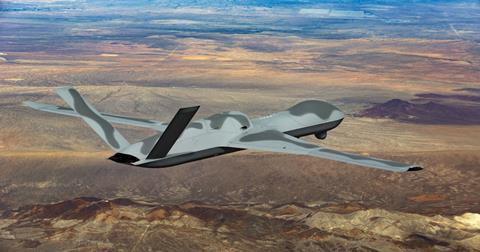
Eventually both the F-22 and F-35 will operate with one of the two CCA prototypes currently in developmental flight testing with the USAF.
GA-ASI is a finalist to deliver the first increment of uncrewed CCA fighters with its YFQ-42A design, which recently made its first appearance in the Middle East at the Dubai air show, in full-scale model form.
The company currently has two examples in testing.
Competing against it is Anduril Industries with its YFQ-44A, which launched for the first time at the end of October with a fully autonomous take-off and landing.
In addition to the USAF contract, both firms are aggressively marketing their CCA designs to prospective overseas buyers in Europe and Asia, including setting up early arrangements for local production.


